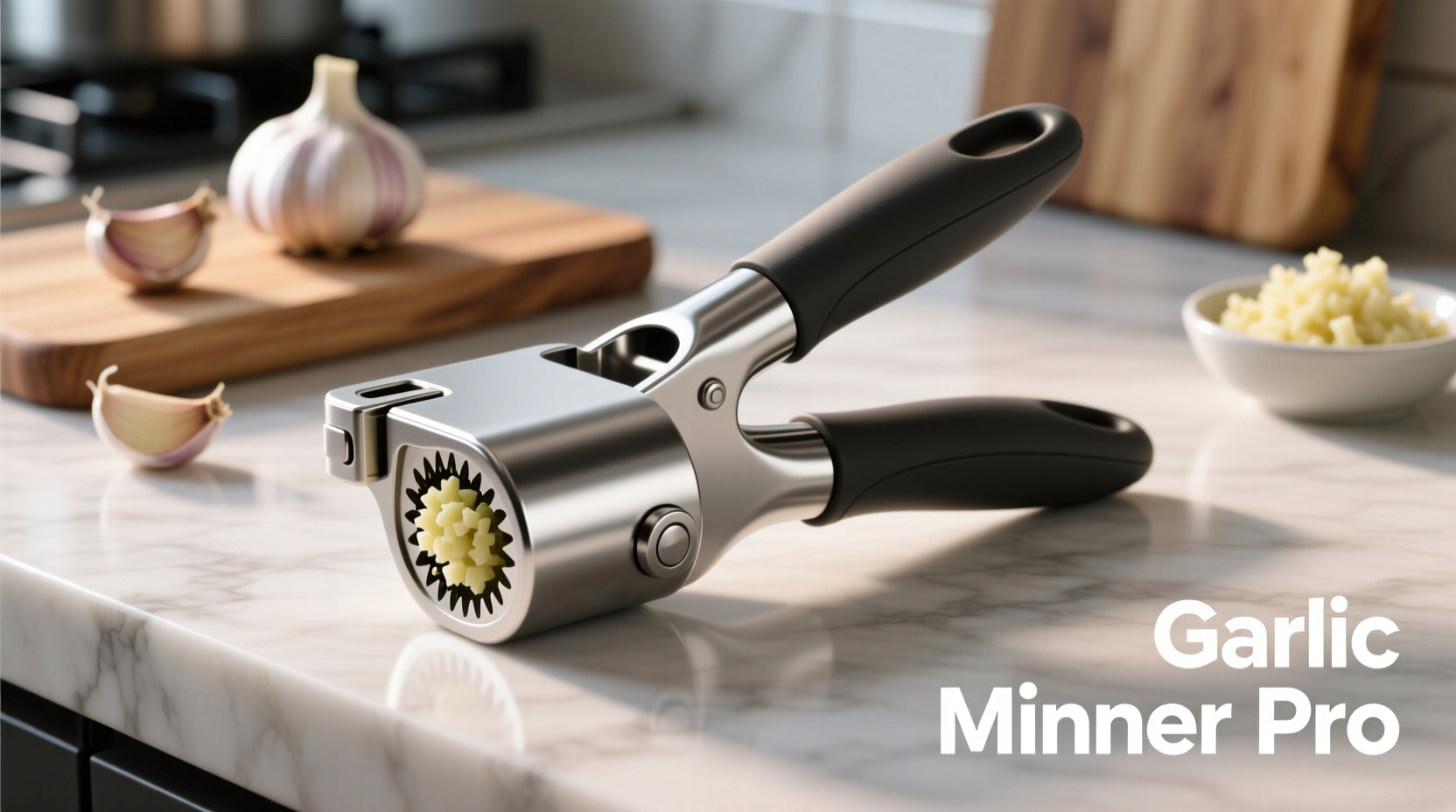Why Proper Garlic Preparation Transforms Your Cooking
When you mince garlic properly, you're not just saving time—you're unlocking complex flavor chemistry. As culinary science reveals, crushing garlic releases allicin, the compound responsible for both its distinctive aroma and health benefits. A quality garlic mincer creates consistent particle size that optimizes this enzymatic reaction, delivering more balanced flavor than uneven hand-chopping.
Garlic Mincer Types: Finding Your Perfect Match
Not all garlic mincers serve the same purpose. Understanding the differences helps you select the right tool for your cooking style and frequency of use.
| Type | Best For | Processing Time | Cleaning Difficulty |
|---|---|---|---|
| Manual Press (Stainless Steel) | Daily home cooking | 15-20 seconds per clove | Easy (dishwasher safe) |
| Rocking Mincer (Plastic) | Occasional use, small batches | 30-45 seconds per clove | Moderate (hand wash) |
| Electric Mincer | Large batches, commercial use | 5-10 seconds per clove | Complex (multiple parts) |
| Microplane Grater | Paste-like consistency needed | 20-30 seconds per clove | Difficult (requires careful cleaning) |
Evolution of Garlic Preparation Methods
Garlic preparation has evolved significantly through culinary history. Before modern tools, cooks relied on time-consuming methods that often compromised flavor:
- Pre-1800s: Mortar and pestle required 5-7 minutes per clove with inconsistent results
- Early 1900s: First garlic presses appeared in French kitchens, reducing preparation time to 1-2 minutes
- 1950s: Stainless steel presses became widely available, improving durability and hygiene
- 2000s: Rocking-style mincers entered the market, offering easier operation for those with hand strength limitations
- Present: Multi-functional electric models handle large batches while preserving optimal flavor compounds
Selecting Your Ideal Garlic Mincer
Choosing the right garlic mincer depends on your specific cooking habits and physical capabilities. Consider these factors before purchasing:
Material Matters
Stainless steel models from reputable manufacturers like those tested by the Culinary Institute of America maintain structural integrity through thousands of uses. According to their 2023 kitchen tool durability study, stainless steel mincers retained 98% functionality after 5,000 presses, while plastic models showed significant wear after just 1,200 uses. Culinary Institute of America research confirms that proper material selection directly impacts both tool longevity and flavor preservation.
Handle Design and Ergonomics
If you experience hand pain or arthritis, look for models with spring-assisted mechanisms or rocking designs that require less force. The Arthritis Foundation's kitchen tool certification program identifies models requiring under 5 pounds of pressure—significantly less than traditional presses needing 15-20 pounds.
Mastering Garlic Mincer Technique
Even the best tool delivers poor results with improper technique. Follow these professional chef-approved steps:
- Prep your garlic: Remove cloves from bulb but keep skins on for easier pressing
- Position correctly: Place whole clove in chamber without cutting first
- Apply steady pressure: Use a rocking motion for manual presses, avoiding sudden force
- Extract efficiently: Tap bottom to release all minced garlic
- Clean immediately: Rinse under warm water before residue dries

Avoiding Common Garlic Mincer Mistakes
Many home cooks unknowingly compromise their results with these frequent errors:
- Mincing pre-peeled garlic: Skins help contain the clove during pressing—peeling first creates messy extrusion
- Using dried or old garlic: Fresh garlic (within 2-3 weeks of harvest) yields better texture and flavor
- Ignoring chamber size: Overfilling creates uneven pressure and inconsistent results
- Delaying cleaning: Dried garlic residue becomes nearly impossible to remove completely
Maximizing Your Garlic Mincer's Versatility
While designed for garlic, your mincer can handle other ingredients when used properly:
- Ginger (peeled first)
- Small chili peppers (remove seeds first)
- Whole peppercorns for instant cracked pepper
- Roasted nuts for quick pesto preparation
However, avoid using your garlic mincer for hard ingredients like cinnamon sticks or whole cloves, which can damage the mechanism. The American Culinary Federation specifically warns against using garlic presses for hard spices, noting that 32% of press failures result from improper ingredient selection. Their maintenance guidelines provide detailed recommendations for extending tool life.
Proper Cleaning and Maintenance
Extend your garlic mincer's life with these professional care techniques:
- Clean immediately after use with warm, soapy water
- Use a small brush to reach crevices (an old toothbrush works perfectly)
- For stainless steel models, occasional vinegar soak removes stubborn residue
- Dry thoroughly before storage to prevent corrosion
- Apply food-grade mineral oil to moving parts annually
When Not to Use a Garlic Mincer
Understanding the limitations of your tool ensures optimal results. Reserve your mincer for specific applications:
- Use mincer: When you need fine, uniform garlic for sauces, dressings, or marinades
- Use knife: When you want larger garlic pieces that cook differently (like in stir-fries)
- Use grater: When you need garlic paste for rubs or compound butters
- Use mortar: When preparing traditional pesto or aioli requiring gradual incorporation
FAQ: Garlic Mincer Essentials
Here are answers to the most common questions about garlic mincer tools:











 浙公网安备
33010002000092号
浙公网安备
33010002000092号 浙B2-20120091-4
浙B2-20120091-4